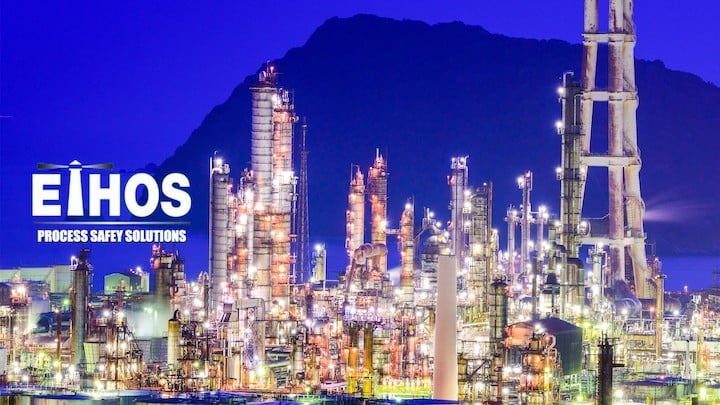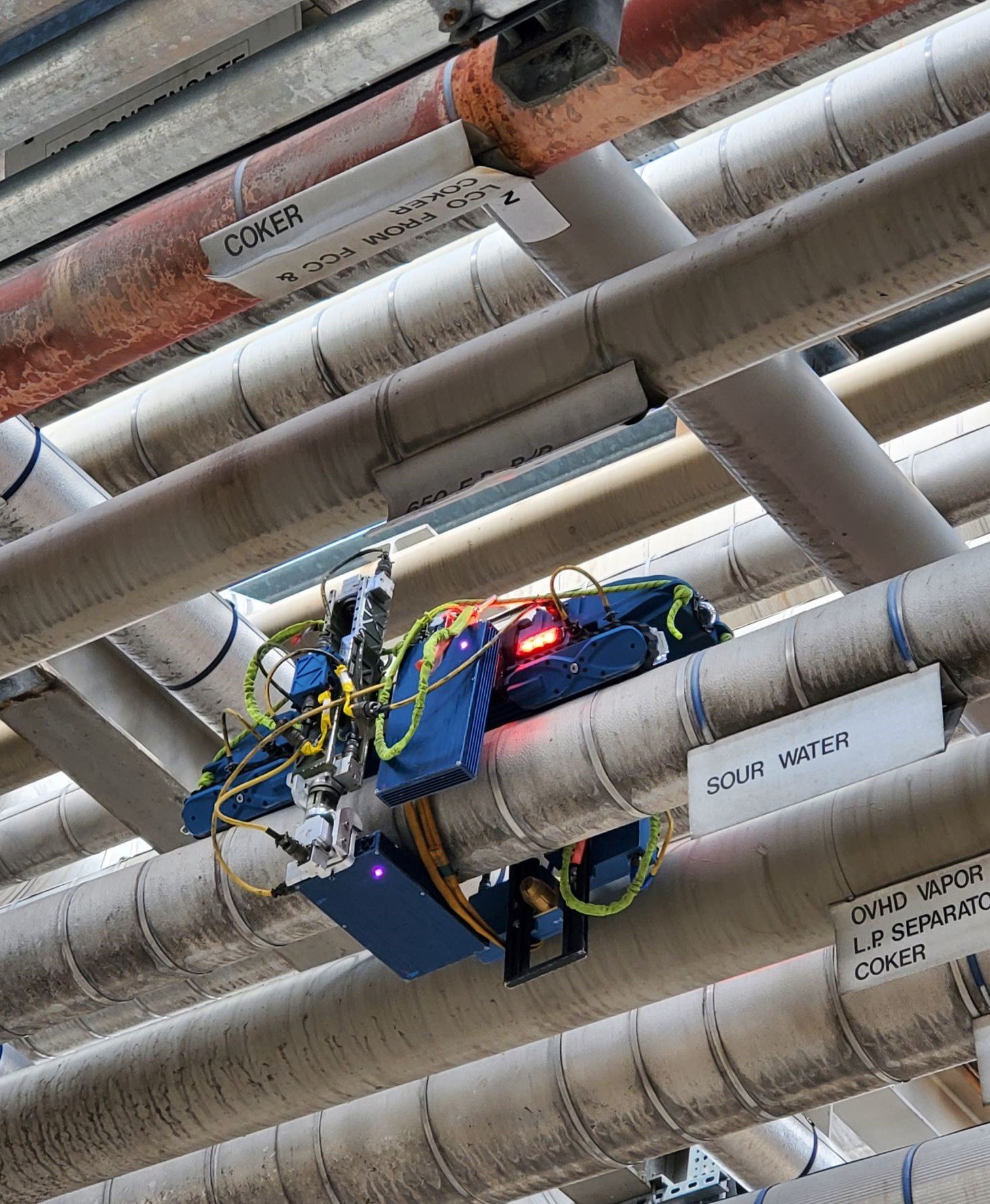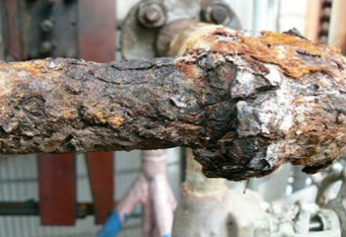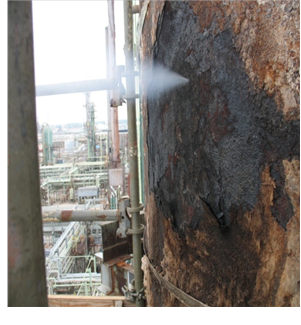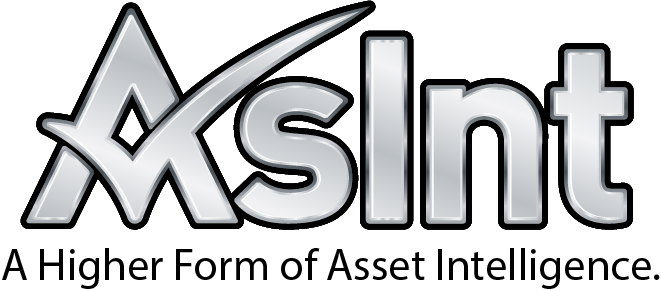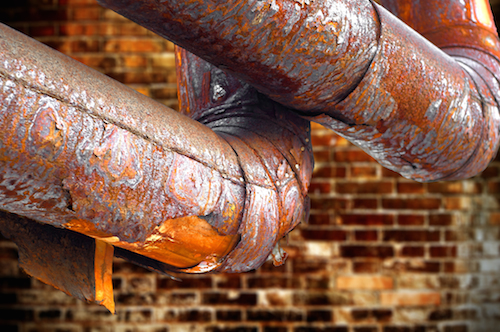In the simplest terms, Corrosion Under Insulation (CUI) is any type of corrosion that occurs due to moisture present on the external surface of insulated equipment. The damage/attack can be caused by one of multiple factors, and can occur in equipment operating at ambient, low, and heated services, depending upon conditions. Moreover, CUI can occur on thermally insulated equipment that is in service, out of service, or in cyclic service. Because these surfaces are not generally available/accessible for visual examination, the onset of corrosion cannot be easily identified, and in extreme cases, severe corrosion with consequential loss of system integrity can occur.
CUI is a prevalent industry problem affecting thermally insulated equipment in the onshore and offshore oil and gas industries, as well as the petrochemical, specialty chemical, fertilizer, and related industries. It is one of the most well-researched and understood damage mechanisms in the refining and chemical process industries, and yet it still represents an inordinately large percentage of global plant maintenance expenditures. For this reason, exercising good engineering practices during the design phase and throughout the entire lifecycle of equipment requiring thermal insulation is crucial. The design engineer concerned about CUI should specify a quality immersion grade metal coating, a durable water repellent thermal insulation installed with a complete well-sealed weather barrier/jacketing system with drainage features.
The corrosion itself can manifest in several different forms, the most common of which are galvanic, acidic or alkaline, and chloride. According to the National Board of Boiler and Pressure Vessel Inspectors:
- Galvanic Corrosion generally results from wet insulation with an electrolyte or salt present that allows a current flow between dissimilar metals (i.e., the insulated metal surface and the outer jacket or accessories).
- Alkaline or Acidic Corrosion results when an alkali, or acid, and moisture are present in certain fibrous or granular insulations.
- Chloride Corrosion can be caused by the combination of insulation containing leachable chlorides with the 300 series austenitic stainless steel surfaces, when moisture is present and temperatures are above 140oF.
External Chloride Stress Corrosion Cracking
External Chloride Stress Corrosion Cracking (ECSCC) is a specific form of CUI that occurs in austenitic stainless steels (300 series SS). Most of those who own solid stainless steel equipment operating in the CUI temperature range are likely to experience ECSCC at some point.
Good coatings, properly selected for the purpose and properly applied, will give some protection for a period of time. Unfortunately, most coatings will break down eventually and allow chloride-laden moisture to contact the surface of the stainless steel. Low chloride, durable, water repellent insulation and well-applied weather barriers will also help avoid the onset of ECSCC. The ASTM C795 Standard Specification for Thermal Insulation for Use in Contact with Austenitic Stainless-Steel measures an insulation’s fitness for use with austenitic stainless-steel piping and equipment. Current versions of the standard also measure fluoride ion concentrations combining the two into an overall halide measurement of concern. The older version of calcium silicate insulation which contained chlorides is especially prone to causing ECSCC. Although the temperature range of 140°F (60°C) to 300°F (150°C) is likely to be the most active region for ECSCC, there are numerous data points reported outside of that temperature range, both above and below, including severe ECSCC of hydro process stainless steel piping operating well above 600°F (315°C).
For the most part, 300 series stainless steels are strong, thus it’s likely that equipment made from this material will form a leak before it breaks completely. The leak itself will probably be small, and because of this, the potential for a large safety event is small compared to other forms of SCC.
This doesn’t mean catastrophic rupture is impossible. There is always the potential for what is known as “plastic collapse,” and of course, even small leaks can be hazardous or produce an undesirable reliability impact.
When it comes to detecting ECSCC after it’s already occurred, inspection methods for ECSCC are normally relegated to surface techniques such as liquid penetrant (LPT) or specialized eddy current probes. For this reason, prevention is usually the best option.
CUI Detection
There are several common methods used for detecting CUI, including “brute forcing” (i.e., removing insulation, inspecting, mitigating, and re-insulating), conventional and unconventional radiography, pulsed eddy current, guided-wave ultrasonics, and ultrasonic thickness measurements from the internal surface of the equipment. Some operating facilities apply risk and/or criticality analyses to prioritize pressure vessels and piping for CUI inspection, versus “brute forcing.” Unfortunately, there is no NDT “silver bullet” for CUI yet.
Prior to selecting one or more inspection methods, one should understand what is or is not likely to be found based on the limitations of the methods considered, and the impact on decisions that will be made about the anticipated reliability and suitability for service of the component(s) in question (i.e., what risk or probability of failure remains). As with any inspection strategy, it is typically most effective to utilize several complementary approaches.
Relevant Codes, Standards, and Best Practices
- API 510, Pressure Vessel Inspector Program is an inspection code that covers the in-service inspection, repair, alteration, and rerating activities for pressure vessels and the pressure relieving devices protecting these vessels. It applies to most refining and chemical process vessels that have been placed into service. CUI inspection is covered in section 5.5.6 of the standard (Tenth Edition released April 2014).
- API 570, Piping Inspection Code - Inspection, Repair, Alteration and Rerating of In-Service Piping Systems provides guidance on how to determine which piping systems are most susceptible to CUI (section 5.2.1), as well as some of the most common locations to find CUI (section 5.4.2) on those systems that are determined to be susceptible to CUI (Third Edition released November 2009).
- API RP 574, Inspection Practices for Piping System Components discusses inspection practices for piping, tubing, valves (other than control valves), and fittings used in petroleum refineries and chemical plants. In order to aid inspectors in fulfilling their role implementing API 570, this document describes common piping components, valve types, pipe joining methods, inspection planning processes, inspection intervals and techniques, and types of records. CUI is covered in section 6.3.3 (Third Edition released November 2009).
- API RP 583, Corrosion Under Insulation and Fireproofing covers design, maintenance, inspection, and mitigation practices to address external CUI as it applies to pressure vessels, piping, storage tanks and spheres. It examines the factors that affect the damage mechanisms, and provides guidelines for preventing external corrosion or cracking under insulation, maintenance practices to avoid damage, inspection practices to detect and assess damage, and guidelines for conducting risk assessments on equipment or structural steel subject to CUI (First Edition released May 2014).
- ASTM C795-08 (2018) Standard Specification for Thermal Insulation for Use in Contact with Austenitic Stainless Steel
- ASTM C1617-19 Standard Practice for Quantitative Accelerated Laboratory Evaluation of Extraction Solutions Containing Ions Leached from Thermal Insulation on Aqueous Corrosion of Metals
- ASTM C1763-20 Standard Test Method for Water Absorption by Immersion of Thermal Insulation Materials
- ASTM STP 880, Corrosion of Metals Under Thermal Insulation provides information on corrosion problems that can occur on thermally insulated plant equipment and piping components if its insulation becomes wet (First Edition released 1985).
- NACE SP0198-2010, Control of Corrosion Under Thermal Insulation and Fireproofing Materials – A Systems Approach (Published July, 2010). This standard is a replacement for NACE RP0198-08 (March 2004).
Related Topics
- Brittle Fracture
- Carburization
- Cavitation
- CO2 Corrosion
- Cooling Water Corrosion
- Corrosion Fatigue
- Cracking
- Decarburization
- Embrittlement
- Erosion Corrosion
- Fatigue (Material)
- Flue Gas Dew Point Corrosion
- Graphitization
- Green Rot
- High Temperature Hydrogen Attack (HTHA)
- High-Temperature Creep
- Hydrochloric (HCl) Acid Corrosion
- Hydrofluoric (HF) Acid Corrosion
- Hydrogen Embrittlement
- Hydrogen Stress Cracking
- Liquid Metal Embrittlement (LME)
- Metal Dusting
- Microbiologically Influenced Corrosion (MIC)
- Naphthenic Acid Corrosion (NAC)
- Phosphoric Acid Corrosion
- Pitting Corrosion
- Spheroidization (Softening)
- Stress Assisted Corrosion
- Sulfidation Corrosion
- Sulfuric Acid Corrosion
- Thermal Fatigue
- Vibration-Induced Fatigue
- Wet H2S Damage
Relevant Links
Topic Tools
Share this Topic
Contribute to Definition
We welcome updates to this Integripedia definition from the Inspectioneering community. Click the link below to submit any recommended changes for Inspectioneering's team of editors to review.
Contribute to Definition













